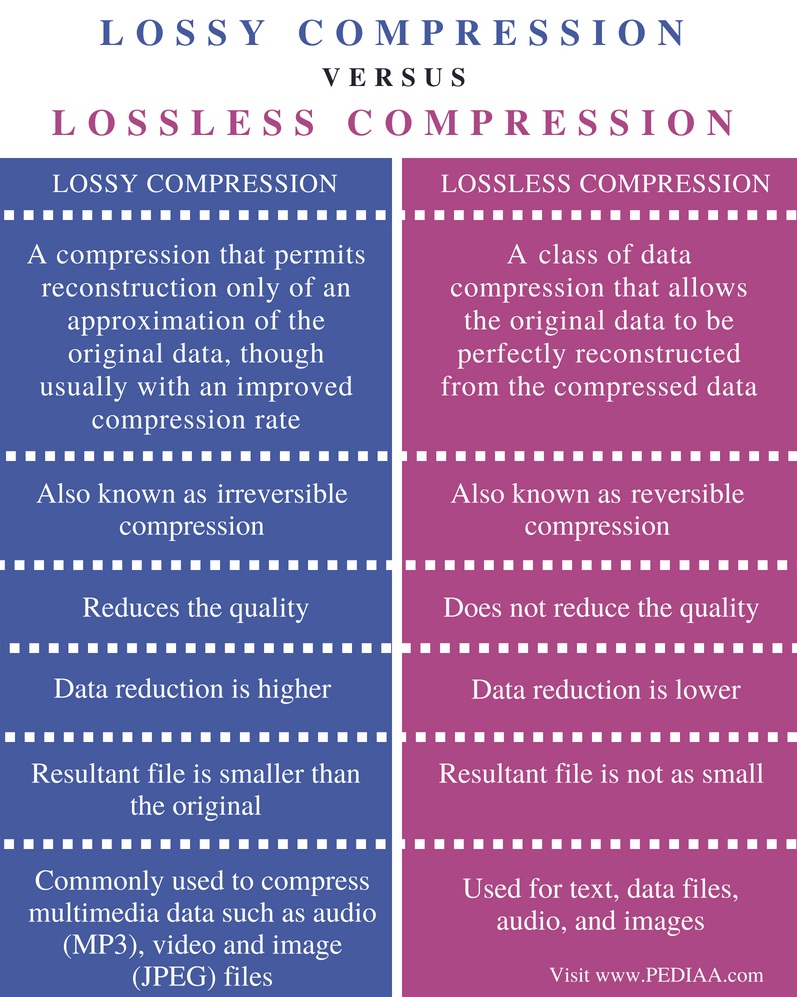

#Lossless video compression full#
The popular video compression standards, H.264 and H.265, however, can implement lossless video compression and are supported on many video compressors. The name of this video codec category declares full quality losses absence - the decompressed video stream should be. Most lossless video compression codecs are for video editing and rendering, and don’t have all-round compatibility. Look for HuffYUV, CorePNG, Motion PNG or Motion JPEG2000. No single one however is supported on all platforms at the same time. Lossy compression discards as much data as possible in a bid to make file sizes as small as possible. Supports lossless compression of a wide variety of RAW data. It is also feasible to create HuffYUV files in ffdshow, VLC media player, and so forth. 4 Answers Sorted by: 3 According to the old page of OpenCV: There are several lossless video compressors available. True mathematically lossless (bit-exact) compression. QuickTime Animation format is supported on After Effects. For example, FFV1 is included in ffdshow and LAV Filters libraries so you can encode videos using it with most non-linear editing software, such as Blender, Adobe Premiere, and VirtualDub. We show that a hardware implementation of a lossless image compression schemecan be used as means for lowering DDR memory bandwidth usage from a videostream. Lossless compression is possible because most real-world data exhibits statistical redundancy. You can also create AVI video files without any compression. Lossless compression is a class of data compression that allows the original data to be perfectly reconstructed from the compressed data with no loss of information.

It can be a problem for users with limited storage space. This results in very large file sizes, approximately 2-3 GB per minute of video. To reduce file size, you can use two types of compression lossless and lossy. You can use a specified video editing or conversion program that supports one of the video coding formats above for lossless video compression. The AVI video format uses less compression than other video formats such as MPEG or MOV. Video file size compression: lossless vs.


 0 kommentar(er)
0 kommentar(er)
